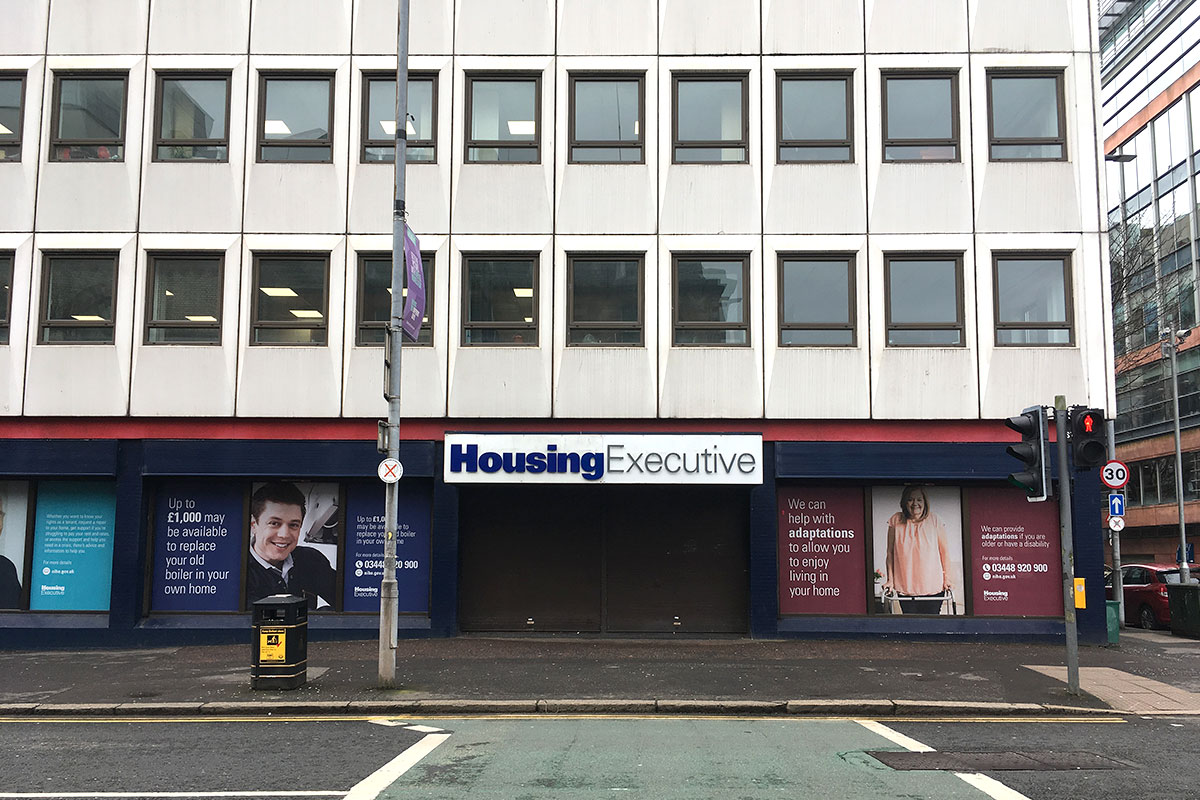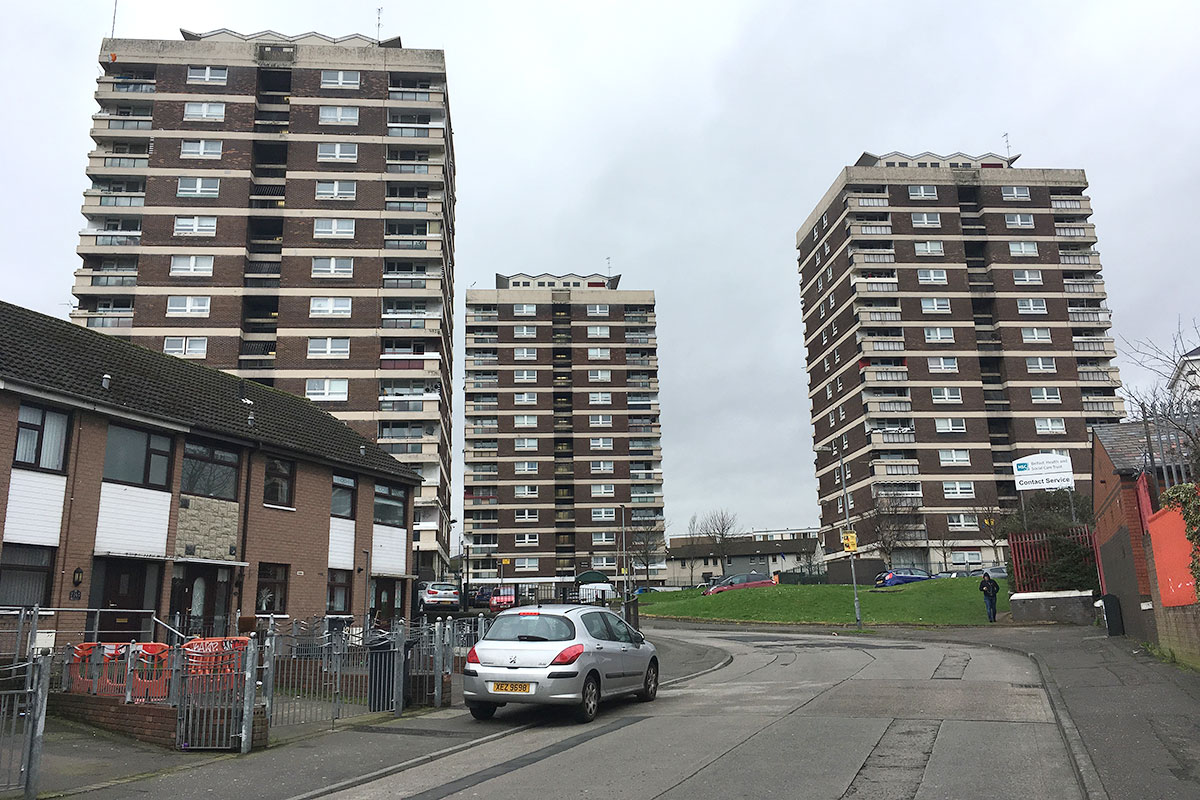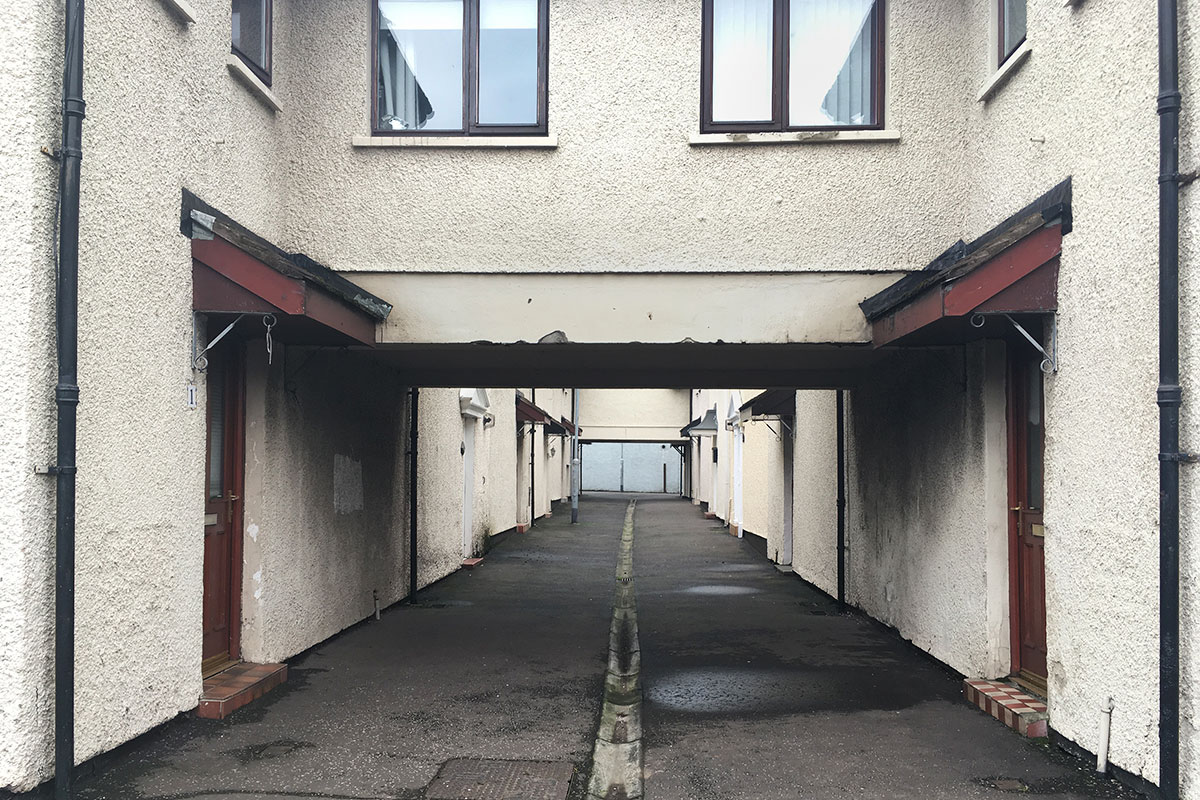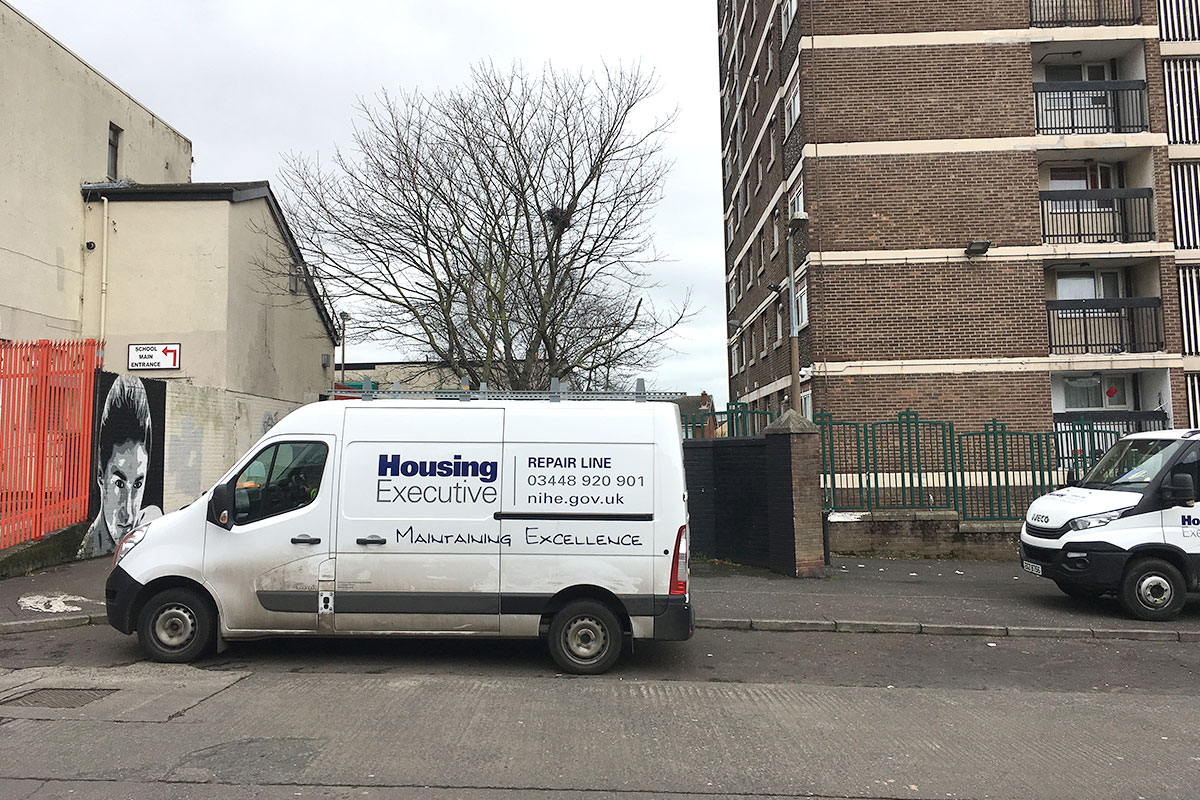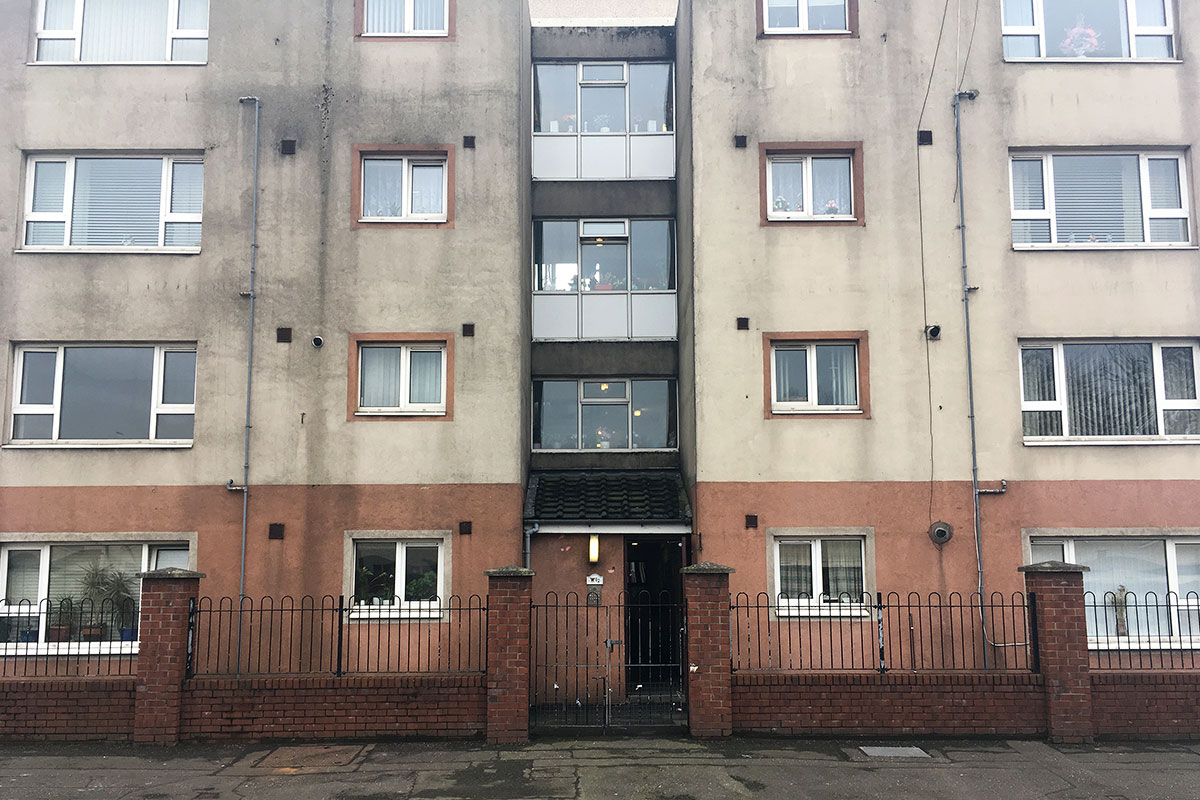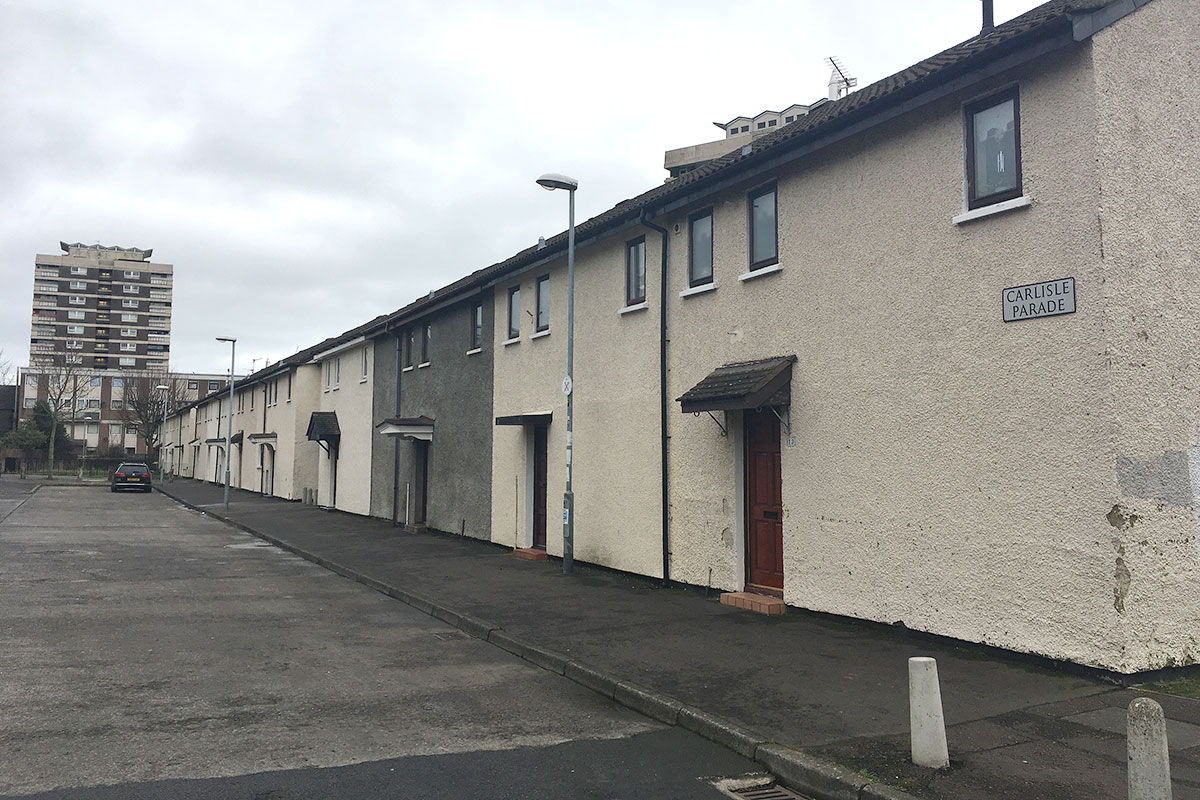You are viewing 1 of your 1 free articles
Endgame: what now for the Northern Ireland Housing Executive?
Northern Ireland has been without a government for two years, leaving its biggest landlord – the Northern Ireland Housing Executive – languishing in a funding crisis. Nathaniel Barker visits Belfast on the hunt for solutions. Photography by Nathaniel Barker and Pacemaker Press
The NIHE’s head office
When Inside Housing tells the receptionist at a Belfast hotel that we’re in town working on an article about the Northern Ireland Housing Executive (NIHE), her face lights up. “I’m in a Housing Executive house myself,” she says proudly. “I’m very happy with them.”
She seems blissfully unaware that her landlord is on the verge of crisis. As Northern Ireland limps into a 27th month with no government, its public housing authority’s enormous funding issues remain unsolved. The situation is approaching critical. In October, a senior civil servant’s letter leaked to investigative website The Detail claimed that the NIHE would begin planning for “de-investment” across approximately half of its 86,000-home stock from the start of 2019.
Inside Housing is here to find out exactly what that could mean and how it can be avoided.
The NIHE was established in 1971 to divorce social housing from sectarian local politics. It was once the UK’s largest landlord with about 170,000 homes, but a series of stock transfers and the Right to Buy have halved its portfolio, while it has not laid a brick since 2002. Nevertheless, its stock eclipses the 50,000 homes owned by the region’s 20 housing associations.
“The Housing Executive is an institution; it’s well liked,” David Williams, Campbell Tickell
The NIHE is more than just a social landlord: it also has ‘regional’ housing responsibilities for homelessness, allocations and distributing development grant to housing associations.
Speak to any NIHE member of staff and they are likely to extol its reputation as a non-partisan and respected public institution.
“We’re privileged,” says chief executive Clark Bailie. “Because people come into our office and they share with us some of their most personal and delicate information, and they trust us to help them.”
Indeed, the NIHE has much to be proud of. Inside Housing has written previously about its groundbreaking desegregation work, while its most recent annual report showed overall tenant satisfaction of 89% – significantly higher than most similarly sized housing associations.
“The Housing Executive is an institution; it’s well liked,” says David Williams, partner at consultancy Campbell Tickell.
Linda Watson, tenant and chair of the NIHE’s Central Housing Forum, agrees. “I do share that view,” she says. “We have a good say on a lot of things that are going on.”
Nevertheless, she says that she has not been made aware of her landlord’s funding woes. And these problems won’t be solved by a good reputation alone.
Outdated and shabby, the NIHE’s headquarters are symbolic of its quandaries. From his office on the top floor, Mr Bailie calmly summarises the problem.
“You can play about with the numbers, you can make certain assumptions about rent and certain assumptions about the phasing, but you always seem to arrive at roughly the same figures. And if you look at the next 10 years and the value of the work we need to do and compare that to the rental income available to us, there’s a gap of about a billion pounds.
Clark Bailie, chief executive of the NIHE
“Now, in the good old days we would have looked at government to provide that level of funding each year, but government simply doesn’t have that sort of money any more.”
The NIHE takes about £290m a year in rents, while its ageing stock currently demands roughly £300m of annual investment. Management and debt costs account for £130m a year – meaning nearly half the required investment is lacking. This problem has been looming for some time: it was identified in an initial Savills survey in 2009, followed by a more comprehensive analysis in 2015.
The Fresh Start agreement from November 2015, which attempted to find common ground for a sustainable future for Northern Ireland, committed to “significant structural reform” of social housing provision as a result of funding pressures.
On one level, the solution is simple: for the NIHE to borrow against its substantial assets to plug the funding gap. But while there is no legislation preventing the organisation from doing this – and it once had borrowings of around £1bn – it has not been practically possible since before the millennium.
“The snag is: at our current status, if we were to borrow, it would score against the Northern Ireland block,” explains Mr Bailie, referring to the block grant provided to the region by Westminster. “Which means it would then be a series of difficult questions. Well, if we prioritise housing, from where do we remove the funding?”
Difficult questions that no one has the authority to answer. Since January 2017, when the late Martin McGuinness resigned as deputy first minister of Northern Ireland, the region’s political parties have been unable to agree on a new power-sharing government. As a result, the NIHE is trudging towards a potential disaster, able to see a better way but without anyone to unlock the gate. In February, David Sterling, head of the Northern Ireland Civil Service, told the BBC that if ministers do not return, some of the region’s social housing may have to be “mothballed”.
The New Lodge Estate in north Belfast
As Mr Bailie puts it: “It’s quite frustrating that everybody seems to know what to do, what we want to do, but we just can’t get it moved on.”
Borrowing is not the only issue. The NIHE’s rents are currently about 25% lower than housing association rents in Northern Ireland and have been frozen since 2016/17, capping its income.
“In around 2002, 2003, social housing rents in Northern Ireland were about the same as comparable areas in England and Wales, but then those rents started to increase and Northern Ireland didn’t track that,” explains Paul Price, director of social housing policy and oversight at the Department for Communities (DfC).
"Unlike councils and housing associations, the NIHE pays about £7m a year in corporation tax"
Ministers in Northern Ireland chose not to increase rents at the same rate.
A document published by civil servants in December 2017 suggested that a Consumer Price Index of inflation-plus-3% hike was needed to help balance the books.
Mr Bailie reveals that a request to increase rents by above inflation in 2019/20 has been submitted to the DfC and is being discussed with the UK Treasury, although he will not disclose the exact proposition. It’s not clear whether a rent increase could be implemented without ministers at Stormont – although Mr Price says this is currently being investigated.
Other peculiarities exacerbate the situation. Unlike councils and housing associations, the NIHE pays about £7m a year in corporation tax. The authority is also still paying back historic loans to the UK government at extortionate interest rates – in some cases more than 13%.
The New Lodge Estate in north Belfast
For Mr Bailie, the long-term solution is that the NIHE’s landlord function “be transformed into a different legal entity”, taking it off the public balance sheet so it can borrow like a housing association.
Leo O’Reilly, the now-retired permanent secretary of the DfC, voiced his support for this option. Ms Watson is also positive about the idea. More specifically, Mr Bailie is optimistic about scaling up a mutual co-operative model with strong tenant and staff representation, similar to 13,000-home Rochdale Boroughwide Housing.
However, this would require political support from a functioning government. “One option could be that Stormont comes back and they consider and accept the recommendations that would be put in the business case, and then we all live happily ever after,” Mr Bailie deadpans.
When ministers do eventually return, they may try something else. Anything involving extra capital from the DfC’s budget is unlikely, explains Mr Price, as Stormont would face “a very difficult affordability challenge to fund that”.
Last year, civil servants managed to find £20m from savings elsewhere to top up the NIHE’s coffers, but Mr Price calls that “a sticking plaster” and says it may not be available again.
A more feasible route would be for funding to be diverted away from the NIHE’s regional services to the landlord operation for stock investment – the DfC’s social housing budget is currently heavily tilted towards development. Mr Bailie acknowledges that is a possibility, but argues it would be robbing Peter to pay Paul.
The New Lodge Estate in north Belfast
“If someone were to take a decision to reallocate new build funding, for example, from the regional to landlord, that would obviously have an impact on the new social housing build figures. It would help us, but would that be sustainable in the long run? I wouldn’t think so. I think you’re still left with the problem: how do you close that billion-pound gap?”
Then there’s the possibility of stock transfers to associations – an approach the DUP has favoured in the past. However, civil servants decided to suspend the initial 2,000-home programme in November after tenants on two estates voted strongly to stay with the NIHE in a ballot. Mr Bailie reckons these results would likely be replicated across the province.
“There’s tremendous brand loyalty – people trust us,” he says – and Ms Watson corroborates that view. Of course, the disparity in rents will likely have played a role, and while Mr Bailie is firm that the NIHE was a neutral broker in the ballot, it’s been privately suggested by some that the organisation made a special effort to promise improvements for the homes on the estates amid union pressure against transfer.
If no funding solution comes forward, the NIHE will begin “de-investing” in an enormous chunk of its stock.
Hypothetically, the UK government could take over and provide emergency funding or legislate for structural change of the NIHE. However, there is little political appetite for this on either side of the water.
Ultimately, if no funding solution comes forward, the NIHE will begin “de-investing” in an enormous chunk of its stock.
“That would mean that you would have to start making decisions that you would no longer invest money in a property once it reaches a certain physical condition,” says Mr Bailie. “And at that point you’d be faced with a really difficult decision: it’s good money after bad, and you have to withdraw that dwelling from use.”
The run-down New Lodge Estate in Belfast is emblematic of years of underinvestment in social housing
At the endgame, he says, that would probably constitute “about half” of the NIHE’s stock – that’s roughly 43,000 homes.
The aim, explains Mr Bailie, is to protect good-quality, viable public assets and keep poorer-quality homes safe and habitable for as long as possible, until they would need to be vacated and sold off or demolished.
The ramifications of this would be huge and would raise tricky questions. How could this impact on fragile relationships between nationalist and unionist communities in Northern Ireland if one group felt it was being disadvantaged? Would rents stay the same for tenants no longer receiving planned maintenance works? What would be the impact on the region’s housing market?
Perhaps most concerning is the increase in homelessness as people’s homes are decommissioned – people who the NIHE would have to provide with temporary accommodation through its regional services.
Mr Bailie says it is “really difficult” to predict when this approach would need to come into play – but describes the possibility as a “significant risk”. Mr Price says that Mr O’Reilly’s letter was correct to suggest the NIHE will start planning and modelling for de-investment from the start of 2019/20.
But remember, this is partially a story about years of underinvestment in Northern Ireland’s social housing. Take a walk around the shabby New Lodge Estate in north Belfast and you could be forgiven for believing that the de-investment programme had already started here.
The run-down New Lodge Estate in Belfast is emblematic of years of underinvestment in social housing
To avoid this dire scenario, the possibility of future investment must come forward by 2020, according to the NIHE. That means Sinn Féin and the DUP overcoming their differences sufficiently to form a power-sharing government. But there has been little progress since talks broke down more than a year ago. Then the politicians must agree on a way forward.
In March 2016, the DUP’s Lord Morrow, as minister for social development, made the last ministerial statement about the NIHE’s stock to date.
“The housing challenge in the next mandate will be finding and agreeing a way of giving the Housing Executive the ability to borrow,” he declared. “If we fail to meet that challenge, the main function of future ministers with responsibility for housing will likely be to oversee the deterioration of the Housing Executive’s stock and the long-term decline of the organisation itself.”
For its part, Sinn Féin will be fiercely resistant to anything that could be seen as privatisation.
Even with broad consensus on the way forward per the Fresh Start agreement, sorting out exactly how to solve the NIHE’s problems will be quicker said than done. Despite repeated approaches from Inside Housing, neither party was able to make a spokesperson available to discuss the NIHE’s future.
If some of Mr Bailie’s language sounds a little flippant, it is likely borne out of experience working against this background. And as an organisation, the NIHE is very limited in its capacity to lobby.
In the meantime, the receptionist at Inside Housing’s hotel and tens of thousands like her across Northern Ireland remain unaware that their homes are at risk.
Taken as a whole, the recent history of the NIHE is a bleak tale of politics letting the public down.
